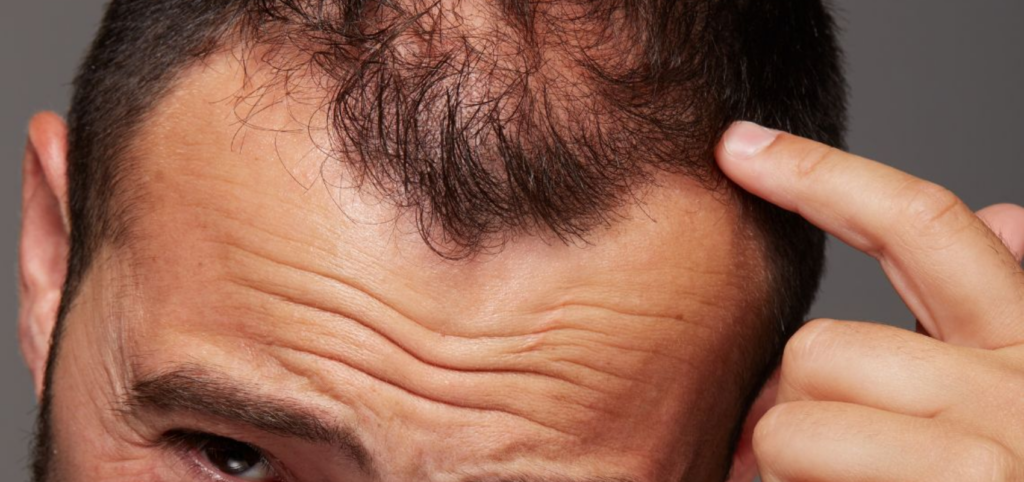Hair Treatment Options for Alopecia
Alopecia, commonly known as hair loss, can be a distressing condition affecting both men and women. There are various forms of alopecia, and understanding them is the first step in identifying the right hair treatment strategy.
While some individuals may experience a temporary thinning of hair, others could be dealing with more permanent and widespread loss, like that seen in alopecia areata, a condition where your immune system mistakenly attacks hair follicles.
If you’re facing hair loss, it’s important to know that several treatment options are available that could help stimulate regrowth or manage the condition. Dermatologists specialize in hair loss and can offer expert advice and solutions tailored to your specific type of alopecia. Treatments range from topical applications, such as Minoxidil, to more advanced procedures, including hair transplantation surgery.

When tackling alopecia, patience and a comprehensive approach are key, as hair growth is a gradual process and treatments may take time to show results. It’s also crucial to manage expectations and seek support, as the emotional aspect of hair loss is significant for many. An informed understanding of alopecia treatments and a proactive stance in managing the condition could pave the way to improved hair health and personal confidence.
Understanding Alopecia
Alopecia involves the loss of hair from your scalp or body, and understanding it is critical to finding the right approach to treatment and management.
Causes of Alopecia
The primary cause of alopecia can be an autoimmune condition where your body’s immune system mistakenly attacks the hair follicles. This condition is known as alopecia areata and is not contagious. Several factors can contribute to the development of alopecia, including genetics and the environment. While stress and poor nutrition are not direct causes, they can aggravate the condition in some individuals.
Types of Alopecia
There are several classifications of alopecia, each presenting with different patterns and extents of hair loss:
- Alopecia areata: Often presents as patchy hair loss on the scalp, beard, or other areas.
- Alopecia totalis: Characterizes complete hair loss on the scalp.
- Alopecia universalis: Describes hair loss across the entire body.
Understanding that alopecia can manifest in various forms is essential for proper diagnosis and treatment.
Hair treatment options for alopecia
Effective treatment and management of alopecia focus on halting hair loss and promoting hair regrowth, where possible. Your treatment options vary based on the type and severity of hair loss you are experiencing.
Medications and Topical Treatments
Various medications and topical treatments are available to combat alopecia, each with different mechanisms of action and efficacy rates. Minoxidil is an over-the-counter solution that can stimulate hair growth and is best for mild alopecia areata. Prescription drugs, like finasteride, are typically used for androgenetic alopecia and work by inhibiting the hormones that cause hair thinning.
Corticosteroids, either as topical applications, injections, or oral medications, can help reduce inflammation and halt the immune system’s attack on hair follicles in cases of alopecia areata. The effect of these treatments varies significantly among individuals, and it’s essential to consult your healthcare provider for personal advice.
| Treatment Type | How It’s Used | Treatment Duration | Potential Effectiveness |
|---|---|---|---|
| Minoxidil (Topical) | Applied to the scalp | Long-term use | Can halt hair loss and promote regrowth in some individuals |
| Corticosteroids (Various forms) | Topical, Injection, Oral | Varies | Can reduce inflammation and immune response |
| Finasteride (Oral) | Taken by mouth | Long-term use | Primarily for androgenetic alopecia; not typically used for alopecia areata |
Surgical Treatments and Hair Transplant
If non-surgical options are not effective or desirable, surgical treatments and hair transplants may be an option. Hair transplant methods like Follicular Unit Transplantation (FUT) and Follicular Unit Extraction (FUE) involve the transfer of hair follicles from one part of your scalp to the thinning or balding areas.
The hair transplant cost can vary greatly depending on the extent of the procedure and the clinic’s location. It’s critical to have realistic expectations and to understand that while transplants can offer permanent solutions, they cannot prevent future hair loss in non-treated areas.
| Procedure | Description | Recovery Time | Cost Estimate |
|---|---|---|---|
| FUT (Strip Method) | A strip of skin with hair is removed and transplanted | Several weeks | High |
| FUE | Individual hair follicles are extracted and transplanted | Less than FUT | Higher than FUT |
See too American Airlines: How to buy cheap airline tickets.
advertising

Deixe um comentário